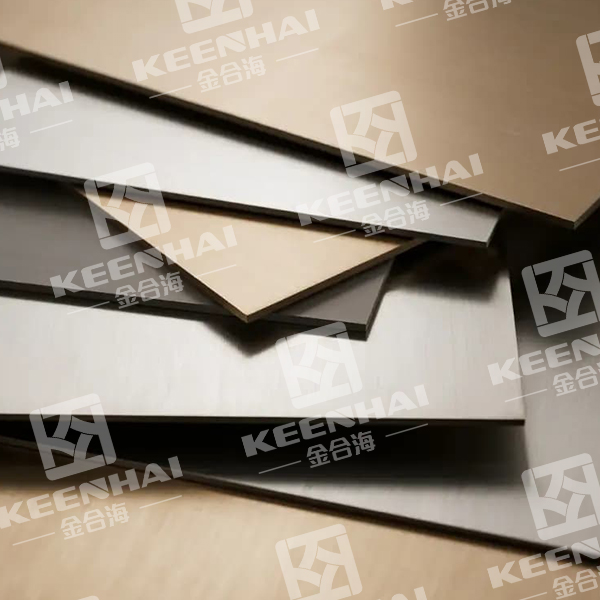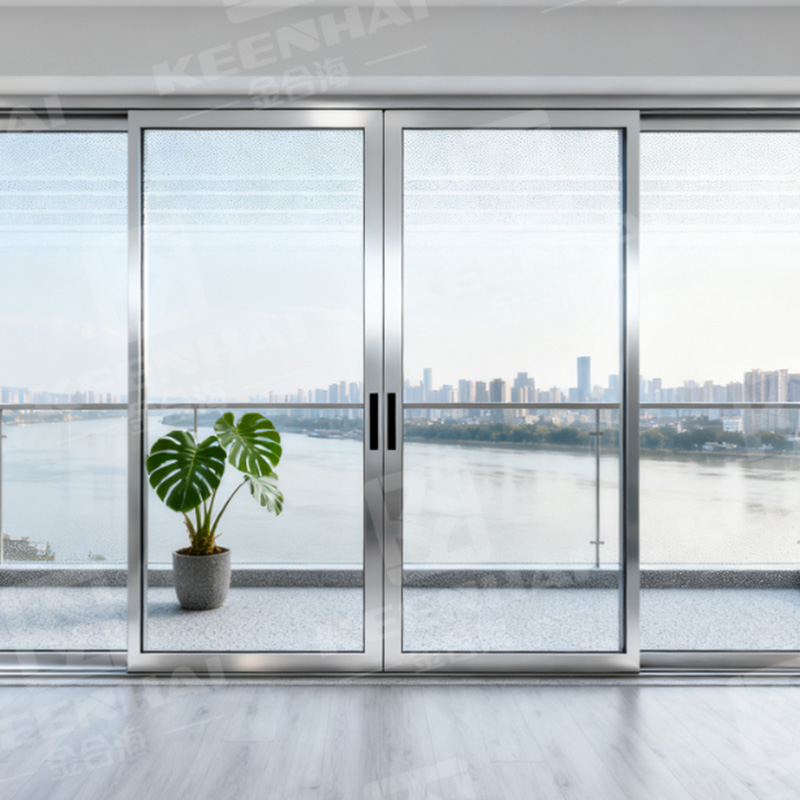Cladding stainless steel means bonding a thin layer of stainless steel to another base metal, usually carbon steel or aluminum. This process combines the corrosion resistance and clean finish of stainless steel with the strength and lower cost of the core material. You’ll find it in architectural facades, pressure vessels, and even elevator doors where durability and style are equally important. Compared to coatings, cladding creates a permanent metallurgical bond rather than a simple surface layer. That’s why it’s trusted in demanding industries as well as in everyday consumer products like cookware.
1. Definition of Cladding Stainless Steel
1.1 Core Meaning and Purpose
Cladding stainless steel refers to the process of bonding a thin layer of stainless steel onto another metal, usually carbon steel, aluminum, or copper. This technique ensures that the finished material combines the durability of the core with the corrosion resistance and clean appearance of stainless steel. In architecture, it is often used for stainless steel cladding on facades and decorative panels, giving buildings both protection and style.
The purpose goes beyond just aesthetics. Stainless steel contains elements such as nickel and chromium, which form a protective oxide film that prevents corrosion. By applying a cladding layer, industries can cut costs—because the bulk of the structure uses a cheaper base metal—while still enjoying the premium benefits of stainless. That’s why you’ll find stainless steel external cladding in modern construction, pressure vessels, and even kitchenware where hygiene and durability are essential.
1.2 Difference Between Cladding and Coating
It’s important not to confuse cladding with coating. While both improve surface performance, the way they bond to the base metal is entirely different. Coating is applied as a sprayed, painted, or plated layer, which may wear away over time. Cladding, on the other hand, is mechanically or metallurgically bonded, creating a much stronger, permanent surface.
Here’s a clear comparison:
| Feature | Cladding Stainless Steel | Surface Coating |
|---|---|---|
| Bonding Method | Metallurgical / mechanical bonding | Sprayed, painted, or plated layer |
| Durability | Permanent, long-lasting | Can peel, chip, or wear off |
| Thickness | Typically 1–10 mm | Often less than 0.1 mm |
| Cost Efficiency | Higher upfront, lower long-term maintenance | Lower initial cost but frequent reapplication |
| Typical Applications | Stainless steel exterior wall, facades, boilers, pressure vessels | Paint on machinery, anti-rust sprays, temporary finishes |
For industries like chemical processing or architectural design, the choice is obvious—cladding offers long-term value, especially where strength and corrosion resistance are critical. This is why specialized suppliers like pvdstainlesssteel emphasize cladding solutions over simple coatings.
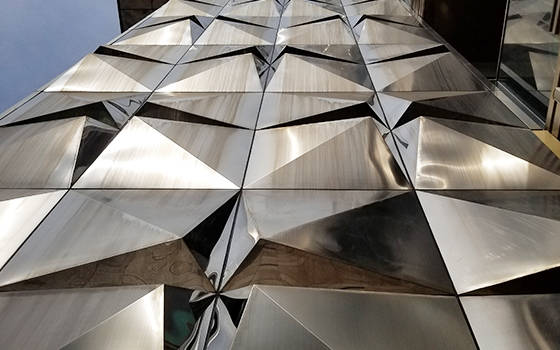
2. Materials Used in Stainless Steel Cladding
2.1 Common Base Metals (Carbon Steel, Aluminum, Copper)
Base metals act as the structural backbone of stainless steel cladding. Carbon steel is most frequently used due to its high tensile strength, affordability, and wide availability. Aluminum provides a lightweight alternative for applications requiring reduced weight, such as transportation panels or decorative facades. Copper is chosen for its natural corrosion resistance and thermal conductivity, often applied in energy-efficient designs.
When selecting the base metal, consider:
-
Structural Strength – Carbon steel can withstand loads exceeding 400 MPa, while aluminum typically supports 200–300 MPa.
-
Weight Requirements – Aluminum can reduce total structure weight by 30–50%, critical in high-rise facades.
-
Thermal Expansion – Copper has a coefficient of expansion around 16.5 µm/m°C, affecting dimensional stability under heat.
Base metals provide a cost-effective solution while stainless cladding offers durability. In modern architecture, using stainless steel exterior wall panels on a carbon steel frame combines affordability with high-end corrosion protection.
2.2 Stainless Steel Grades for Cladding (304, 316, Duplex)
Choosing the proper stainless steel grade is vital for performance and longevity. 304 stainless steel contains around 18% chromium and 8% nickel, offering excellent corrosion resistance in mild environments. 316 stainless steel adds 2–3% molybdenum, enhancing protection against chloride-induced corrosion, ideal for marine or coastal installations. Duplex stainless steel blends austenitic and ferritic structures, delivering higher strength and moderate corrosion resistance, often used in industrial chemical applications.
| Grade | Chromium (%) | Nickel (%) | Molybdenum (%) | Applications |
|---|---|---|---|---|
| 304 | 18–20 | 8–10 | 0 | Architectural panels, kitchenware |
| 316 | 16–18 | 10–14 | 2–3 | Coastal facades, marine structures |
| Duplex 2205 | 22–23 | 4–6 | 3 | Chemical plants, offshore platforms |
Selecting a grade depends on corrosion environment, mechanical load, and budget. For premium projects, suppliers like pvdstainlesssteel recommend 316 or duplex for exterior cladding.
2.3 Bonding Layers and Thickness Considerations
The effectiveness of cladding relies on the bonding layer and stainless thickness. Bonding methods include explosion bonding, roll bonding, and hot pressing, each ensuring metallurgical adherence between base and cladding. Typical steps are:
-
Surface Preparation – Clean, degrease, and roughen base metal for optimal adhesion.
-
Bonding Process – Apply heat, pressure, or controlled detonation to fuse layers.
-
Quality Inspection – Use ultrasonic or dye-penetrant testing to check for delamination.
Cladding thickness usually ranges from 1 mm to 10 mm. Thicker layers improve corrosion resistance and mechanical performance but increase cost. Thinner layers save material but require careful handling to avoid punctures or scratches. Commonly, 2–5 mm balances performance and affordability. Stainless cladding applied on stainless steel cladding panels ensures longevity in urban and industrial environments.
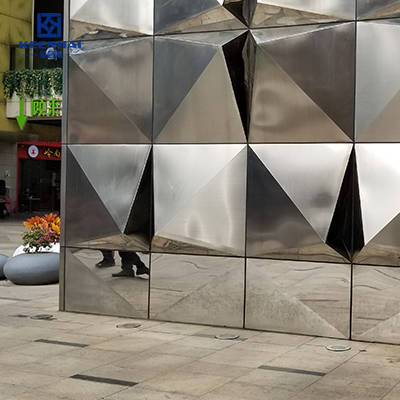
3. Manufacturing Techniques
3.1 Explosion Bonding Process
Explosion bonding is a specialized metallurgical process that joins stainless steel to a base metal using controlled detonation. This technique produces a molecularly bonded interface that is highly resistant to delamination and corrosion. Typical applications include chemical plant panels, architectural facades, and high-durability exterior cladding.
The steps involved are:
-
Preparation – Clean and shape the base metal to exact dimensions, ensuring uniform surface contact.
-
Placement of Explosive Layer – Carefully measure and distribute explosives over the cladding surface to control bond pressure.
-
Detonation – Trigger the controlled explosion, which forces the stainless layer onto the base metal at extremely high speed, creating a strong metallurgical bond.
-
Inspection – Use ultrasonic or X-ray testing to verify bonding integrity and detect voids.
This process allows thicker stainless layers with high mechanical performance. For example, bonding a 4 mm stainless sheet onto a 6 mm aluminum substrate produces a panel that can endure bending stresses over 500 MPa, suitable for stainless steel cladding applications. For technical details, see explosion welding.
3.2 Roll Bonding and Hot Pressing
Roll bonding and hot pressing are widely used for stainless steel cladding in flat sheets and panels. Roll bonding applies compressive force through high-pressure rollers, while hot pressing uses heat and pressure simultaneously.
-
Surface Cleaning – Degrease and roughen both stainless and base metal surfaces.
-
Stacking – Place the stainless layer atop the base metal with any interlayers or bonding agents.
-
Rolling or Pressing –
-
Roll Bonding: Pass the stack through multiple rollers at pressures between 150–300 MPa.
-
Hot Pressing: Apply uniform heat (400–600°C) and pressure (200–400 MPa) for a set dwell time.
-
-
Cooling and Inspection – Controlled cooling prevents warping; inspect using visual and ultrasonic methods.
| Method | Pressure (MPa) | Temperature (°C) | Typical Thickness Range | Applications |
|---|---|---|---|---|
| Roll Bonding | 150–300 | Room | 1–10 mm | Panels, industrial machinery |
| Hot Pressing | 200–400 | 400–600 | 2–12 mm | Architectural cladding, heat exchangers |
Roll bonding and hot pressing are cost-effective for large-scale production, providing reliable adhesion without compromising corrosion protection.
3.3 Modern Laser and Welding Methods
Laser cladding and precision welding have emerged as highly controlled alternatives for stainless steel surfaces. Laser methods melt a thin stainless layer onto the base metal, creating a uniform, corrosion-resistant finish. Welding, including TIG and MIG techniques, joins stainless panels for structural integrity, often used in stainless steel elevator doors or decorative facades.
Key steps in laser cladding:
-
Surface Preparation – Clean metal to remove oxide and grease for proper laser absorption.
-
Laser Parameters Setup – Adjust power (500–2000 W), speed (5–20 mm/s), and spot size for the material.
-
Cladding Passes – Apply multiple thin layers to achieve desired thickness and uniformity.
-
Post-Processing – Grind or polish surface to ensure smoothness and aesthetic quality.
Laser cladding provides a highly durable, metallurgically bonded surface with minimal heat-affected zones, making it ideal for precise, premium-quality panels. For more technical reference, see laser cladding.
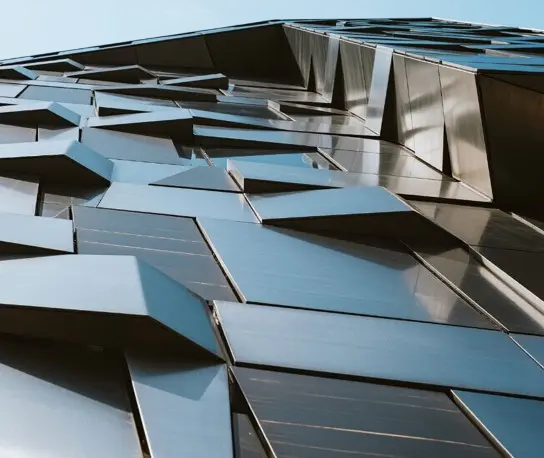
4. Applications and Maintenance Tips
4.1 Common Applications of Stainless Steel Cladding
Stainless steel cladding serves as a durable protective layer in numerous industries. Its corrosion resistance, aesthetic appeal, and mechanical strength make it ideal for:
-
Architectural Facades – High-rise buildings and commercial complexes often use stainless steel exterior walls to resist weathering and maintain a polished appearance.
-
Industrial Equipment – Chemical, pharmaceutical, and food processing plants benefit from stainless cladding to prevent corrosion and facilitate cleaning.
-
Marine Environments – Boats, docks, and offshore platforms use stainless cladding to withstand chloride-rich environments without pitting or rusting.
-
Elevator and Lift Doors – Modern stainless steel elevator doors gain both strength and aesthetic appeal from cladding, ensuring longevity under frequent use.
-
Interior Design – Stainless panels enhance kitchens, hospitals, and laboratories with hygienic, easy-to-clean surfaces.
The choice of stainless grade (304, 316, or duplex) depends on exposure conditions and mechanical needs. For example, 316 provides superior resistance in marine or chemical settings, while 304 suffices for interior applications.
4.2 Maintenance Practices to Preserve Cladding
Proper care extends the lifespan of stainless cladding and prevents inox rust or staining. Maintenance involves:
-
Regular Cleaning – Use mild detergents and soft cloths; avoid abrasive pads or steel brushes that can scratch surfaces.
-
Inspection – Conduct periodic visual checks for pitting, discoloration, or loose bonding, especially in high-humidity or salt-exposed areas.
-
Surface Passivation – Treating cladding with citric or nitric acid removes contaminants and restores the chromium oxide layer, enhancing corrosion resistance.
-
Prompt Spill Management – In kitchens or chemical plants, immediately remove acidic or salty spills to reduce corrosion risk.
-
Avoid Contact with Dissimilar Metals – Prevent galvanic corrosion by minimizing direct contact with metals such as copper or aluminum.
| Maintenance Step | Frequency | Purpose |
|---|---|---|
| Cleaning with mild soap | Weekly to biweekly | Removes contaminants and preserves shine |
| Visual inspection | Monthly | Detects early signs of rust or damage |
| Passivation treatment | Every 6–12 months | Restores corrosion resistance |
| Spill removal | As needed | Prevents pitting and staining |
These steps ensure long-term value, reducing repair costs and keeping surfaces attractive. Well-maintained cladding can last 20–30 years, depending on environmental exposure and usage intensity.
4.3 Practical Tips for Installation and Longevity
Installing stainless steel cladding correctly is crucial for durability and aesthetic appeal:
-
Surface Preparation – Ensure base metal is clean, dry, and flat; any debris or irregularity can compromise bonding.
-
Correct Adhesive or Welding Method – Choose the appropriate technique, such as laser cladding for precision panels or explosion bonding for thick, high-strength applications.
-
Environmental Considerations – Avoid areas with excessive chloride exposure or ensure higher-grade stainless (316 or duplex) is used.
-
Mechanical Protection – Apply protective films during transport and installation to prevent scratches.
-
Joint and Edge Treatment – Seal edges with compatible materials to prevent moisture ingress and galvanic corrosion.
Following these steps maximizes both corrosion resistance and visual appeal, particularly in high-traffic areas like commercial buildings or modern elevator entrances.
For more insights on PVD stainless steel and its applications, visit our detailed guide: What is a PVD stainless steel sheet?

